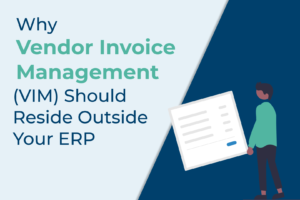Introduction
With the changing dynamics of business, the rise of newer concepts like cryptocurrency, cloud platforms, SaaS-based applications, and the use of AI and their direct application into business operations are all nudging us towards a digital world.
But what does it really mean to be a digital-first organization?
A remote work culture alone doesn’t make your organization digital per se. Instead, a digital organization consists of a highly agile environment, thereby enabling remote work. See the difference?
As such, becoming a digital-first organization isn’t just about using technology, but creating a comprehensive structure to support digital activities.
Even before the pandemic, there was evidence of a critical shift towards working from home. Paper-based processes, for instance, have been increasingly seen as restraints on productivity and a source of delays. This creates system bottlenecks, hampering a flexible and independent working environment. For many, the question remains: Why require employees to be physically present for secondary tasks that can be automated? And how can you integrate new changes in a way that helps instead of disrupts?
To help answer this question, let’s look closer at what it means to be a “digital-first” company.
Understanding digital transformation
“Giving employees mobile apps is a digital solution, but it’s not digital first unless it is part of a comprehensive strategy,” says Stephen Redwood, principal at Deloitte Consulting LLP. “At digital-first organizations, people, processes, and structures are all focused on optimizing digital so companies can be more productive.”
Digital transformation is a journey, and it takes time. An organization goes through a series of changes before becoming a truly independent digital entity. The goal is what we call digital maturity or digital transformation maturity – something gained over a period of learning and growth.
As per another study conducted by Deloitte, these concepts can be broken down into three specific phases of implementation:
- Imagine: First is the awareness stage, where companies need to identify opportunities, define ambitions, and create a clear vision for the future based on current digital resources.
- Deliver: This stage involves constructing a plan of action based on the previous phase. Here is the time to test plausible roadmaps and eventually prioritize the company’s capabilities for improvement based on business objectives. What’s more, this is when you can assess your organization’s digital maturity and strategize future scope.
- Run: Now you can start integrating technologies at a large scale. Implementation begins to move forward, and the impact becomes more measurable. Here, the benefits and ROI can be recognized at large, and improvements can be visualized easily.
The process of digital transformation is discussed in more depth in this blog.
Research shows that COVID-19 has sped up digital transformation across organizations. The technology industry reported the highest with a 78% increase in digital efforts, with healthcare not far behind at 74%, and manufacturing at 65%.
Among companies with declining revenues due to COVID-19, 45% said that they are focusing on digital transformation now. Companies have accelerated the digital adoption of customer and supply-chain interactions by almost 3-4 years.
In addition, 72% of companies who had already adapted digitization initiatives before the pandemic were able to transition seamlessly towards a remote work culture.
But it’s easier said than done, right? When we talk about being digital-first, it includes organizations who haven’t strategized an approach to start their digital initiatives. The hardest part might actually be getting started: that’s why we’re here to help.
Going Digital – Where to Start
In the list of the top things that hold back digitization, 36.7% of respondents said CEOs or boards of directors lacked initiative. First, decision-makers need to begin the ‘assessment’ phase, where an organization as a whole understands which processes are most critical.
For instance, the supply chain is especially prominent for the manufacturing industry, but for banking and investment companies, the main priority is often seamless customer interactions.
Here’s the catch: your main goal in the assessment stage is not just to reshape your primary processes. In fact, the first step towards digitization will work best if it’s less disruptive. Remember, digitization is not just about making a change; it’s about making the right change at the right time. Everything you do should contribute towards eventual digital transformation.
Digital and E-signatures
If you’re looking for a small yet impactful process to initiate transformation, digital signature solutions are a good place to start. All industries, departments, sectors, and hierarchies have their own documentation needs. Nothing moves without approvals, and approvals depend almost exclusively depend on signatures.
Through paperless documentation, electronic signatures make up a critical aspect of digitization. Highly sensitive transactions can lead to legal repercussions as interacting with data poses cybersecurity and identity theft challenges. Digital and electronic signatures let you meet these obstacles to ensure and maintain compliance necessities while enhancing document management.
To know all there is about digital signatures – read our eBook.
Why are digital and electronic signatures perfect for going digital ?
- Despite being a fundamental part of business processes, signatures are relatively straightforward and allow for minimum process remodeling.
- Implementation is easy: with the rise of SaaS-based architecture, you can move to a digital signing environment within days instead of weeks.
- A signature solution can integrate seamlessly with your existing infrastructure and even your ERPs/CRMs without the need for unnecessary program and network changes.
- Traceable features make accountability easier. Transactions are more secure, and all internal and external compliance requirements can be easily met.
- Changes from having a signature solution in place can be observed almost instantly after implementation.
What’s more, using a suitable digital signature solution enables your entire document management process to be done electronically, from formatting to signature and completion. This eliminates the need for paper-based manual intervention at any point.
With advanced features like geo-tagging and timestamping, tracking and accountability become far easier. Storing and retrieving documents are made simple and fast as well.
Moving onto Robotic Process Automation (RPA)
We cannot talk about digital transformation without mentioning process automation (RPA).
If you’re not familiar, RPA replicates human behavior and takes care of repetitive manual tasks by completely automating them.
RPA has already taken the manufacturing industry by storm, single-handedly moving the 4th industrial revolution forward. RPA is growing exponentially, with the global robotic process automation market size expected to reach USD $10.7 billion by 2027, expanding at a CAGR of 33.6% from 2020 to 2027.
With manpower restricted in the past couple of years, the idea of a robotic assembly line has expanded to new possibilities. Halting manufacturing can even lead to delays throughout the supply chain, affecting supply and demand. Needless to say, this is not a desirable situation for anyone involved, so why not let RPA take the wheel?
With automation at the front line, the manual workforce can focus on tasks that matter. Important daily activities can progress even in the face of a crisis.
In short, adding RPA to your digitization efforts can:
- Help reduce dependency on manual intervention
- Eliminate repetitive tasks and the chance for errors.
- Reduce the use of time and resources.
- Free up employees to use their time more productively.
Even now, we are just at the beginning of what this technology may allow us to achieve.
On the bright side, RPA is (and may continue to be) an enabler for digital transformation. While implementing it may be a daunting process for organizations at first, RPA has the potential to make subsequent digitization efforts far easier.
The reason why RPA is appropriate for a digital-first approach is because it allows for small, incremental improvements that give immediate results. This is far less risky than a long, unpredictable cycle that can take years to guarantee any significant returns.
Processes like the supply chain, in which each segment is made up of smaller functioning parts, can be the ideal testing ground for RPA. Purchase orders and sales orders are a standard part of the supply chain, so, automating it can reduce manual data entries and streamline the entire workflow.
Handling goods and delivery can also lead to extended wait times and production delays. Automating the Goods Received Note (GRN) process can not only reduce the time taken to manage deliveries, but also remove the burden on AP officials by making data calibration and payments a lot easier.
Endless possibilities with digitization
The possibilities of digitization are endless. It’s a way of welcoming change perpetually. But this doesn’t mean that digitization has to be a mindless process of adopting new technologies for their own sake.
Becoming a digital-first organization is a journey that will be different for everyone. The decision to make a change has to be yours. However, we hope that by now you can see the benefits. The possibilities discussed here are simply a glimpse into what the beginning of digitization might look like.
There are so many ways in which an initiative for going digital can be introduced. Two of the most prominent are:
- Electronic Data Interchange (EDI): A format-specific data communication method that makes document exchange exponentially easier.
- Application Programming Interface (API): A modern digital system that can retrieve and deliver any data you want in seconds.
In 2019, for all the B2B electronic sales, EDI was invested in for 78.4% i.e. a figure of $7 trillion. This was even before the pandemic knocked on the doors. Imagine the figures EDI must have reached in today’s date, with all of the digitization already in full swing.
EDI enhances data integration and streamlines the course of information for an organization. EDI for supply chains can ultimately lead to improved customer service along with process visibility amongst trading partners. EDI for business data exchanges streamlines the data, correspondence between businesses. Here is a lot more to EDI that you can learn in our blog here:
What’s more to it is, EDI when clubbed with API, enhances the data exchange to yet another level. API enables the deposition of business-ready documents to the end recipient without any manual intervention.
Taking business into consideration, APIs enable users to customise and use the data for their requirements. From the ultimate distribution point of view, API can handhold the process to reach its enhancement.
If your business can integrate both API and EDI, it is sure that the business will get an esteemed advantage to compete in the growing digital economy.
Digitization is such a massive topic that there’s only so much that can be discussed in a single article. In our next blog, we have discussed how organizations could enhance their Order to Cash cycle by implementing process automation.
To learn more about how you can start your digitization contact us.


